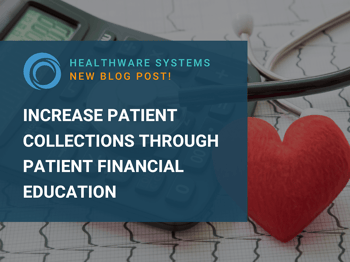What is Business Process Automation? (And How Can Healthcare Facilities Use BPA?)
Posted on Tuesday, March 17, 2020
Business process automation (BPA) is the digital transformation of organizational workflows. BPA utilizes technology to automate manual, repetitive, routine tasks and to streamline processes. BPA applies business logic to respond to events, make information “actionable,” and anticipate next steps to proactively manage workflow.
Benefits of Business Process Automation
Business process automation enables organizations to assign their valuable time and employees’ skill sets to other objectives while technology takes care of the monotonous, time-consuming, and routine operations for them.
In addition to time, BPA saves organizations money. It is a cost-effective way to increase efficiency and speed up workflow. Plus, digital transformation of business procedures reduces paper usage (making processes more budget and environmentally friendly).
By limiting the opportunity for human error, BPA also improves accuracy and prevents deficiencies.
Business Process Automation in Healthcare
HealthWare Systems’ Facilitator is a business process automation platform created specifically for healthcare.
Facilitator can apply BPA to the following areas that affect the healthcare revenue cycle:
Pre-Arrival – prevents integrity issues that can result in technical denials or underpayments.
Prior Authorization – automates authorization requests using 278 transactions, web-crawling, fax requests, and payer portals; automatically checks status of pending authorizations; monitors status changes that affect patients’ authorized benefits.
Insurance Verification – verifies insurance in real time; identifies potential restrictions that may impact reimbursement; finds any unreported coverage by searching top regional payers.
Medical Necessity Checking – verifies medical necessity in real time; shares results with referring physician; produces ABN for patient signature; provides automated updates of LCD and NCD rules.
Financial Assistance Screening – determines the likelihood that patients will qualify for financial assistance; manages documentation requirements and selects/completes application forms based on eligibility program(s) pursued.
Appeals Management – routes denial work object to appropriate team member for resolution; generates appeal letter or form specific to payer or denial type; assembles appeals package and submits appeal; eliminates hard copies.
Release of Information – securely captures, gathers, and sends medical records; eliminates hard copies.
Electronic Medical Forms – business rules determine the correct forms needed for every patient’s specific encounter, so employees no longer need to memorize selection criteria; pre-populates forms with patient demographics.
Order/Referral Management – fast-tracks pre-registration by ensuring accurate and complete physician orders are received.
Automated Messaging – reminds patients of upcoming appointments.
And More
Is “BPA” in Your Site’s DNA?
Business process automation is increasingly necessary for the success of today’s organizations, including those in the healthcare field. Through BPA, hospitals and health systems can streamline workflow while lowering costs, better allocating resources, and increasing accuracy.
Request a live demo to learn more about how you can transform workflow at your healthcare facility using business process automation.

